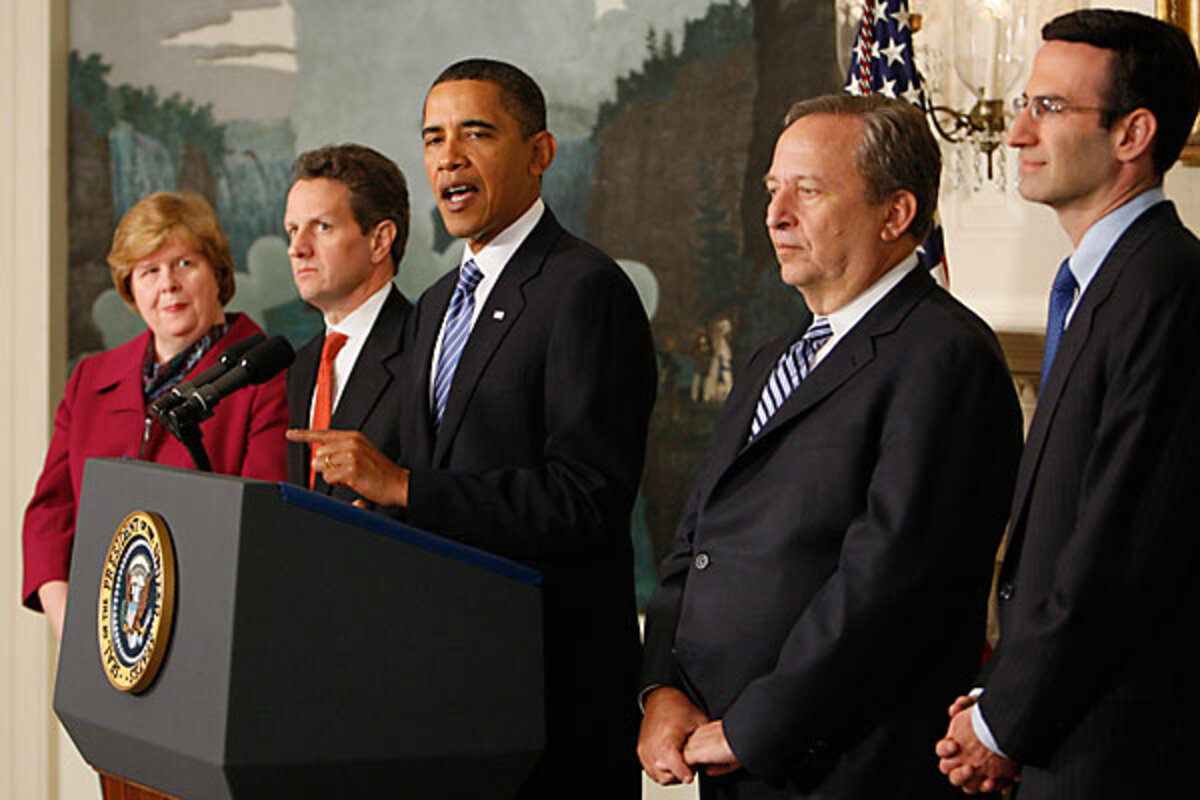Obama proposes fee on big banks. But who would really pay?
Loading...
| New York
On Thursday, President Obama proposed a new fee on banks to cover $117 billion in expected losses in the Troubled Asset Relief Program (TARP).
But who would really pay the Financial Crisis Responsibility Fee?
Some bank analysts believe the money would come out of shareholders‚Äô pockets, which could make bank stocks look less appealing. Bank lobbyists, meanwhile, say any new fee would get passed right along to businesses and consumers. But Mr. Obama says the cost of the fee should be swallowed by the bankers themselves ‚Äď many of whom are about to receive large bonuses.
‚ÄúI‚Äôd urge you to cover the costs of the rescue, not by sticking it to your shareholders or your customers or fellow citizens with the bill, but by rolling back bonuses for top earners and executives,‚ÄĚ Obama said in announcing the plan.
Despite the president’s plea, bank lobbyists still say the proposed fee is likely to be passed along to consumers and businesses. The lobbyists have quickly labeled the plan, which Congress must vote on, a new tax.
‚ÄúTaxes, like all other operating expenses, are included in the pricing structure,‚ÄĚ says Scott Talbott, chief lobbyist at the Financial Services Roundtable in Washington, which lobbies for the 150 largest financial-services firms. ‚ÄúIt could put upward pressure on goods and services, hitting consumers, business, and other banks.‚ÄĚ
But some financial analysts think that banks would be hard pressed to pass along the fee. That’s because smaller banks would be excluded from the fee, which means they would be able to compete for consumers’ accounts, says Douglas Roberts at Channel Capital Research in Shrewsbury, N.J.
For example, in the area of New Jersey where Mr. Roberts lives, three or four new banks have formed in the past year, he says. ‚ÄúThey won‚Äôt have the burden of that additional fee,‚ÄĚ he says.
The fee isn’t the only thing that the White House is pressing big banks on. They’re also under pressure to make more loans. In the past, Obama has invited the CEOs of the largest financial institutions to the White House, where he’s scolded them about the tightened credit.
This fee would only make the lending situation worse, Mr. Talbott argues.
‚ÄúThere will be less money available to make loans,‚ÄĚ he says. ‚ÄúIt would reduce the amount of cash a bank has to lend.‚ÄĚ
There are also ramifications if the proposed fee is absorbed by shareholders. They might receive lower dividends or see the value of their holdings fall.
‚ÄúThe latter [falling stock values] matters more now than usual, since we want the banks to be able to raise considerable further capital going forward as we work to safeguard the system against future problems,‚ÄĚ writes Douglas Elliott, a fellow at the Brookings Institution, in an analysis. ‚ÄúThis is another argument for keeping the taxation moderate.‚ÄĚ
Under Obama‚Äôs plan, the fee would be 15 basis points, or 0.15 percent, of ‚Äúcovered liabilities,‚ÄĚ defined by the White House as the banks‚Äô debt. The fee would apply to banks with a minimum of $50 billion in assets.
The fee would not be imposed on General Motors, Chrysler, Fannie Mae, Freddie Mac, and AIG. These firms received TARP loans but have not paid them back yet.
According to the White House, the new fee would be in place for 10 years or more, depending on how long it takes to recover the TARP losses.
But no one really knows how big the losses are, because the TARP program runs for another four years, as Talbott notes. The automobile companies may become significantly profitable by then. The real estate market may rebound.
‚ÄúThis tax is premature. The program is not closed yet,‚ÄĚ says Talbott.
-----
Follow us on .




